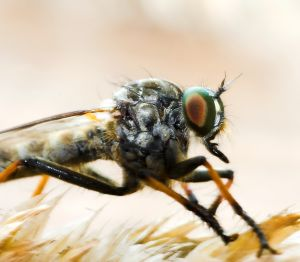DENGUE
 Dengue
is the most common arbovirus infection in humans. Humans are the main
host of the virus, and dengue viruses are transmitted to humans
through the bite of Aedes mosquitoes, the most important of
which is the predominantly urban species Ae. aegypti (WHO
1993).
Dengue
is the most common arbovirus infection in humans. Humans are the main
host of the virus, and dengue viruses are transmitted to humans
through the bite of Aedes mosquitoes, the most important of
which is the predominantly urban species Ae. aegypti (WHO
1993).
There are
four serotypes of the dengue virus.
Dengue
haemorrhagic fever and dengue shock syndrome are life-threatening
complications that are thought to result from a second dengue
infection, with a virus different in serotype to that which caused
the primary infection (Halstead et al. 1970).
http://www.newscientist.com
Dengue
fever is transmitted in Australia by the freshwater breeding mosquito
Ae. aegypti (Sutherst 1994). The north and central areas of
Queensland are considered potentially receptive to the establishment
of dengue. Imported cases are regularly diagnosed in all capital
cities.
About
4,000 cases of dengue were recorded in the period 1991-2005.
Climate
zones broadly determine the distribution of mosquito-borne diseases
(Bergquist 2001), and weather is a major determinant of incidence of
disease. Rainfall and temperature are crucial for breeding and
replication of the virus. Humidity strongly affects mosquito
survival, and hence the probability of transmission
(Sellers 1980; Reiter 1988; Leake 1998).
Transmission
of mosquito-borne viruses – such as those that cause the
arthritic Ross River and Barmah Forest fevers, Dengue fever, and
several forms of the brain-inflaming encephalitis – will
probably extend into temperate regions
This
is disturbing as the latest outbreak of Dengue fever – which
can cause a life-threatening haemorrhagic fever – infected at
least 85 people in Cairns in March 2003. And in 2002, Tasmania
recorded its largest outbreak of Ross River fever, a disease more
often seen in northern Australia.
http://www.abc.net.au/health/regions/features/climatechange/
ESTIMATE OF RISK REGION AROUND 2100



2007
DENGUE ZONE 2020 DENGUE ZONE 2050 DENGUE ZONE
if
we continue to allow emissions to increase, by 2100: the dengue
transmission zone could reach as far south as Sydney
A13_s2_1
DENGUE
(2)
Indicative
direct and indirect health cost items and broader social options for
adaptation to reduce the impact of heatwaves and dengue transmission.
|
Health
issue
|
Direct
Cost Items
|
Indirect
Cost Items
|
Social
Adaptation Options
|
|
Dengue
|
•
Medical care, disease treatment, laboratory costs
•
Personal prevention and mosquito control; community
education; quarantine services to avoid establishment of vector
species
|
• Losses in
tourism
|
•
More communities on dengue prevention alert
•
Changed water storage practices
• Change housing
design (screening windows)
|
|
Heatwaves
|
•
Loss of life (esp. elderly)
• Possible
increases in workplace accidents and heat stroke
|
•
Productive work time reduced
•
Development of heat early warning systems
|
•
Changes in building guidelines, housing construction
and design (to passive solar)
•
Urban planning to reduce heat island effect
•
Altered lifestyle (more time spent indoors in summer)
– impacts on exercise?
•
Changed work times for certain industries over summer
months
|
A13_s2_2
 Dengue
is the most common arbovirus infection in humans. Humans are the main
host of the virus, and dengue viruses are transmitted to humans
through the bite of Aedes mosquitoes, the most important of
which is the predominantly urban species Ae. aegypti (WHO
1993).
Dengue
is the most common arbovirus infection in humans. Humans are the main
host of the virus, and dengue viruses are transmitted to humans
through the bite of Aedes mosquitoes, the most important of
which is the predominantly urban species Ae. aegypti (WHO
1993).


